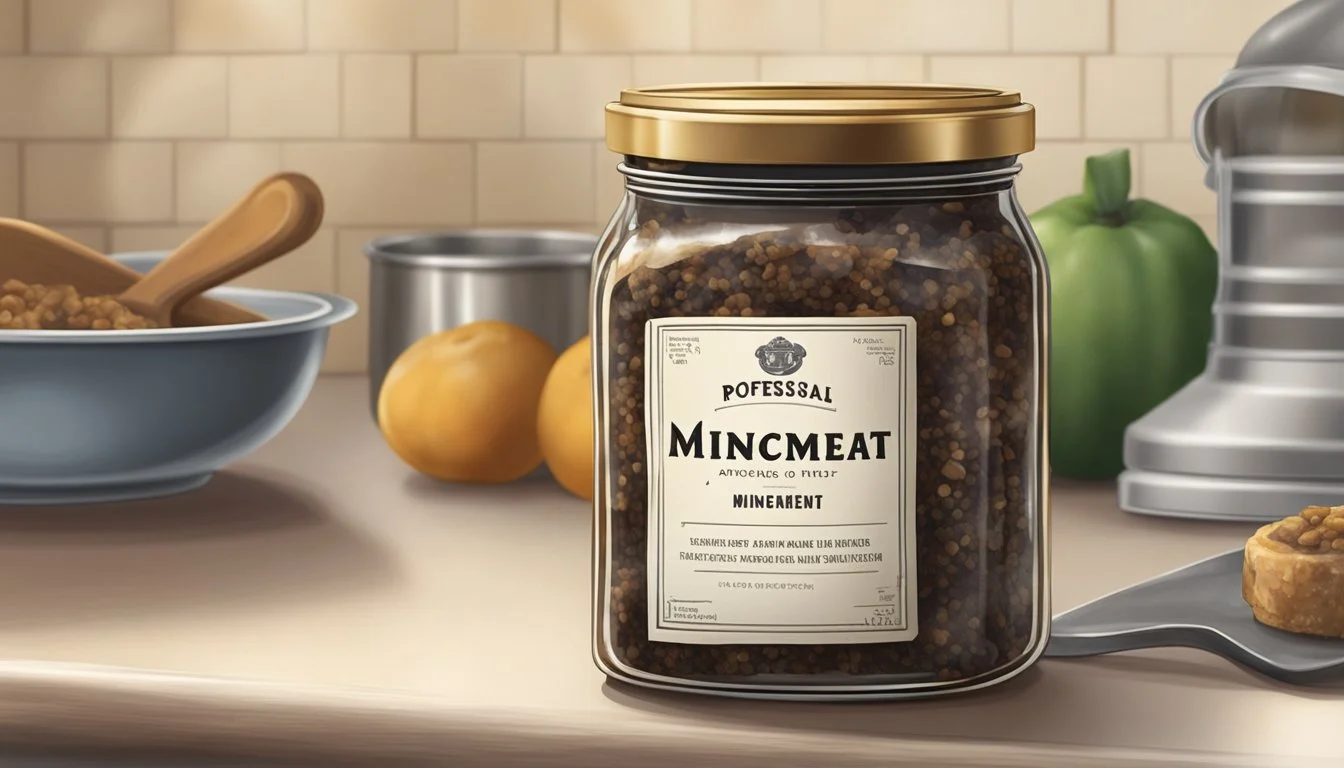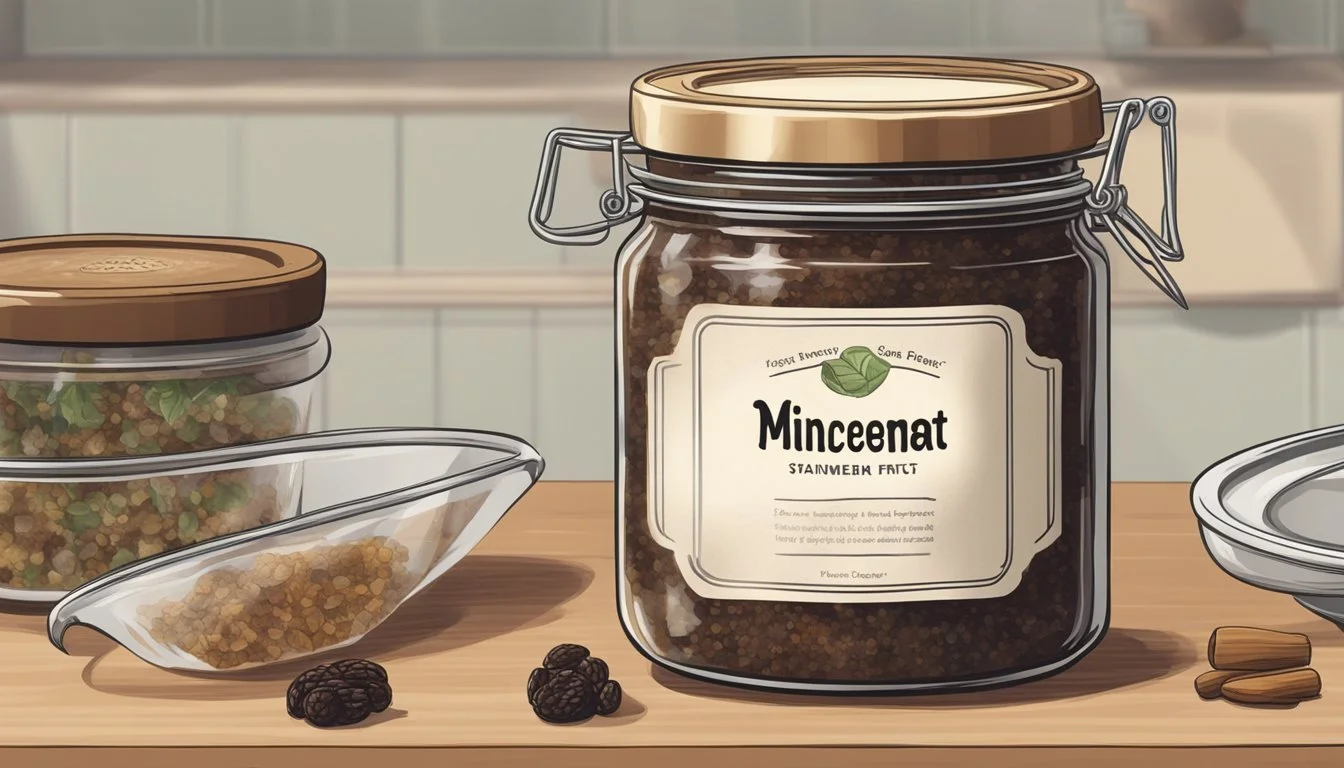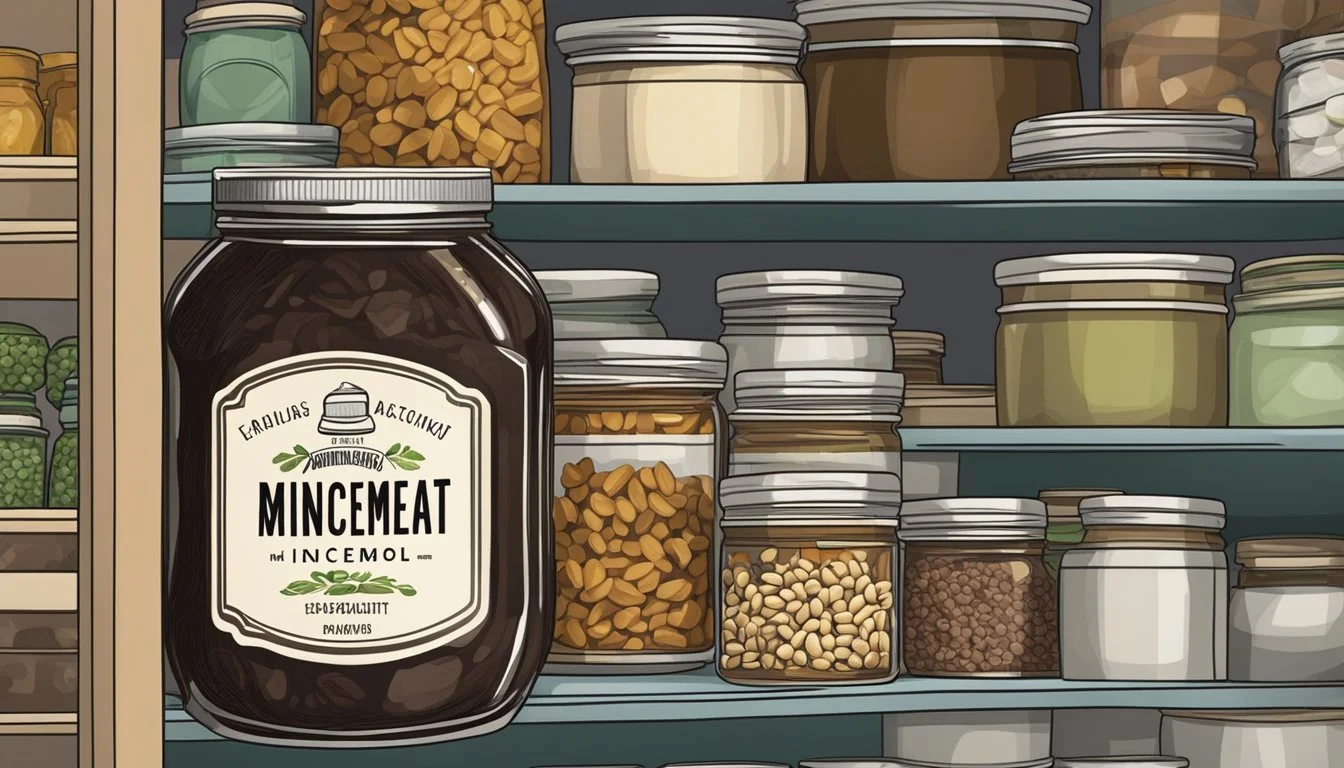Does Mincemeat Go Bad?
Understanding Its Shelf Life and Spoilage Signs
Mincemeat, a concoction rich in fruits and spices, often finds its way into kitchens during the festive Christmas season. Traditionally used for filling mince pies and tarts, this mixture does not, contrary to its name, typically contain actual meat anymore. The ingredients that make up mincemeat, such as dried fruits, sugar, spices, and sometimes a splash of alcohol, are known for their preservative properties, which inherently extend its shelf life.
While mincemeat is associated with longevity, the question of whether it can go bad is a valid consideration for those storing or making it in advance of the holiday season. It's important to note that the longevity of mincemeat largely depends on how it is stored. When sealed and stored correctly, the high sugar content and presence of alcohol act as preservatives, potentially allowing it to maintain its quality over an extended period.
The debate over whether it is safe to use mincemeat past its printed expiration date often arises. If stored properly, it may last well beyond this date, though signs of spoilage such as an off smell or taste should be heeded. Additionally, a common practice to revive and enrich the flavors of mincemeat that has been stored for a long time is to stir in a small amount of alcohol such as brandy or whiskey before use.
Understanding Mincemeat
Mincemeat is a mixture whose ingredients and preparation methods have evolved over time, yet its distinctive flavor profile remains integral to many culinary traditions.
Composition
Mincemeat traditionally incorporates a variety of ingredients that balance sweetness with rich and savory notes. The table below outlines its typical components:
Ingredients Purpose Beef Suet Adds richness and binds the mixture. Fruit Components like apples and citrus peel provide tartness and fleshiness. Dried Fruit Raisins, currants, and other dried fruits offer sweetness and texture. Sugar Used to sweeten the mixture. Nuts Introduce crunch and nutty flavors. Spices Such as cinnamon, nutmeg, and cloves, contribute warm aromatic qualities. Alcohol Brandy or rum can be added as preservatives and for added flavor.
Historical Significance
Historically, the mincemeat pie's roots trace back to European crusaders who brought spices and recipes back from the Middle East. Originally a way to preserve meat, it involved actual minced meat, often combined with fruits, sugar, and spices. Over the centuries, non-meat versions have become popular, while the sweet, spiced elements have remained constant.
Culinary Uses
In contemporary cooking, mincemeat is chiefly used for desserts, especially during festive seasons such as Christmas. Mincemeat pies, small pastries filled with spiced fruit mixture, are a traditional British delicacy. The mincemeat recipe may be adapted and used in other sweet treats, from tarts to turnovers, each bringing a taste of tradition to modern-day fare.
Storage Guidelines
Proper storage is critical to maintaining the freshness and safety of mincemeat. Adhering to precise temperature settings and wrapping techniques ensures optimal shelf life.
Refrigeration
Refrigerated mincemeat should be kept at a temperature below 40°F (4°C) to prevent bacterial growth. Upon purchasing or preparing mincemeat, it should be placed in the refrigerator immediately. For raw mincemeat, store it in the original packaging if intact, or transfer to an airtight container if opened. Cooked mincemeat must be cooled down to room temperature before being refrigerated, then stored in an air-tight container. To maintain its quality, one should consume cooked mincemeat within 3 days.
Freezing Procedures
To freeze mincemeat, one can extend its shelf life significantly. For lengthy storage, it is recommended to divide the mincemeat into portions, which can then be tightly wrapped or vacuum-sealed to prevent freezer burn and facilitate thawing. Place the wrapped portions in a freezer, ideally at 0°F (-18°C) or lower. The shelf life for frozen cooked mincemeat is approximately 3-4 months for optimal taste and safety.
Shelf Life
The use-by date or sell-by date on mincemeat packaging serves as a guide for safe consumption. Raw mincemeat tends to have a shorter refrigerator shelf life than cooked mincemeat. A vacuum-sealed package of raw mincemeat can last for an additional 7-9 days in the refrigerator beyond standard recommendations. Always inspect the mincemeat for changes in color, texture, or smell, which can indicate spoilage, regardless of the date. If there is any doubt about the meat's condition, it is advisable to discard it.
Signs of Spoilage
Recognizing the signs of spoilage in mincemeat is crucial for food safety. Spoiled meat can harbor bacteria harmful to one's health, and it is vital to identify these signs before consumption.
Visual Cues
When examining mincemeat, one should look for changes in color. Fresh mincemeat typically exhibits a bright red hue due to its oxygen exposure, but as it spoils, it may turn brown to gray. Spotting these color changes, especially if they are widespread and not just on the surface, can indicate spoilage. Additionally, the presence of mold or any other form of discoloration is a definitive sign that the meat should not be consumed.
Scent and Texture
The scent of mincemeat is a reliable indicator of its condition. Fresh mincemeat should have a mild, almost imperceptible smell. A sour or rancid odor is a clear sign that the mincemeat has gone bad due to spoilage bacteria. The texture of the meat is equally telling; it should be firm to the touch and not leave residues. If the mincemeat feels slimy or sticky, it is not safe for consumption.
Taste Testing
Taste testing is not a recommended method for determining meat spoilage. Consuming even a small amount of spoiled meat can pose a risk of foodborne illness. It is safer to rely on visual and olfactory cues. If the mincemeat displays any signs of spoilage, or if it is past its expiration date, it should be discarded.
Food Safety
Food safety is essential when handling mincemeat, as improper management can lead to bacterial growth and contamination. Ensuring that mincemeat does not spoil requires an understanding of potential pathogens and the best practices for preventing contamination.
Pathogens to Watch
Mincemeat, like other meat products, is susceptible to pathogenic bacteria such as E. coli and salmonella. The USDA sets strict guidelines to limit the presence and growth of these bacteria, citing that they can lead to food poisoning. Safely handling and properly cooking mincemeat are crucial steps in reducing the risk of bacterial infections.
Preventing Contamination
Preventing cross-contamination is key to keeping mincemeat safe for consumption. Raw mincemeat should always be kept separate from other foods, especially those that are ready to eat. Here are some critical measures to follow:
Storage: Store mincemeat in a sealed container to prevent juices from spreading to other foods.
Defrosting: Thaw mincemeat in the refrigerator or in a microwave if it is to be cooked immediately after thawing.
Cooking: Cook mincemeat within 24 hours of defrosting to minimize the risk of bacterial growth.
Temperature Management: Keep mincemeat out of the danger zone (40-140°F or 4.4-60°C). Cook it to a safe internal temperature and store leftovers promptly.
Preparation Tips
When handling mincemeat, whether it’s for cooking or incorporating into recipes like mince pies, proper preparation is key to prevent spoilage and ensure safety and taste.
Thawing and Cooking
Before cooking mincemeat, it should be completely thawed if previously frozen. The best practice is to thaw mincemeat in the refrigerator, allowing for slow and safe defrosting. Never thaw mincemeat at room temperature as this can encourage bacterial growth. When cooking the mincemeat, a meat thermometer should be used to ensure the mince reaches a safe internal temperature. Cookbooks suggest an internal temperature minimum of 160°F for beef mince to ensure that it is safe for consumption.
Usage in Recipes
Mincemeat can be used in various recipes, from traditional meat dishes to sweet treat mince pies. When used in pies, the mincemeat should be rich in flavor and adequately spiced. It plays a central role in the pie’s overall taste. For dishes like mince pies, ensuring the right balance of mincemeat to pastry is crucial; cookbooks often recommend precise ratios for the best results.
When incorporating mincemeat into recipes, always follow specific steps mentioned in the recipes to maintain the desired texture and to avoid any food safety issues. Recipes may often call for cooking mincemeat before it is used in a pie, ensuring that the meat is already cooked when it goes into the pastry shell.
Preservation Techniques
Preserving mincemeat effectively is crucial to prevent it from going bad. The techniques discussed here are aimed specifically at reducing the impact of oxygen and the role of temperature control, as well as the traditional methods of canning and bottling, to extend the shelf life of mincemeat.
Oxygen and Freezing
Oxygen is a key factor in the spoilage of foods, as it promotes bacterial growth. Freezing is a method where the temperature is brought down low enough to inhibit the activity of bacteria, thus prolonging the life of the meat. It's essential to ensure that mincemeat is stored in airtight containers or vacuum-sealed before freezing to minimize exposure to oxygen.
Important Dates: Always label frozen mincemeat with the freezing date to keep track of its shelf life.
Alcohol and Sugar as Preservatives: These ingredients are often included in mincemeat recipes not only for flavor but also because both act as preservatives. Alcohol and sugar reduce the availability of water within the product, making it less hospitable for bacterial growth.
Canning and Bottling
Canning and bottling are preservation methods that involve sealing cooked mincemeat in sterile containers. The high heat applied during the canning process kills bacteria, yeasts, and molds that can lead to spoilage.
Sterilization: Prior to filling, jars must be thoroughly sterilized to ensure the elimination of any contaminants.
Sealing: Properly sealing the containers prevents recontamination and keeps oxygen out, both crucial in preserving the meat's quality and safety.
Quality Assessment
When assessing the quality of mincemeat, two critical factors come into play: the coloration of the meat which is influenced by myoglobin levels and the packaging integrity which can affect freshness.
Meat Coloration
The color of ground beef is an informative indicator of its freshness and safety. Fresh ground beef typically exhibits a bright red hue due to oxymyoglobin, a pigment formed when myoglobin in the meat is exposed to oxygen. Over time or without proper oxygenation, this color may fade to a more brownish shade due to metmyoglobin formation. While this color change does not necessarily mean the meat has spoiled, persistent grey or brown coloration throughout, especially under a clear film of packaging, warrants caution.
Bright Red: Indicates freshness, presence of oxymyoglobin.
Brown/Grey: Possible sign of aging, metmyoglobin presence.
It is essential for consumers to differentiate between a natural color change and signs of spoilage. Ground beef that has an unnatural color, such as green or off shades, should be avoided as this indicates potential spoilage.
Packaging Integrity
Proper packaging maintains the ground beef's safety and quality by protecting it from external contaminants and preserving its moisture content. Consumers should inspect for tears, punctures, or excessive air in the packaging, which can compromise the meat's integrity. Even the most immaculate meat-based product can spoil if the packaging is breached.
Intact Packaging: Suggests good practices and meat protection.
Damaged Packaging: Increases risk of contamination and spoilage.
Leftovers or previously opened ground beef should always be stored in airtight containers to prevent spoilage and preserve quality. Proper storage and quick usage after opening ensure that the mincemeat maintains its quality and safety for consumption.
Enhancing Flavor
To elevate the taste of mincemeat, focusing on the right blend of spices and the selection of fruits and nuts is essential. These ingredients not only impart depth but also enhance the mincemeat's overall flavor profile.
Spice Selection
The choice of spices in mincemeat is crucial to its flavor. Experimentation with the following can result in a richer taste:
Ginger: Adds a warm, spicy kick.
Cinnamon: Provides a sweet and woody note, ideal for the winter season.
Clove: Delivers a strong, pungent essence.
Nutmeg: Offers a sweet, nutty, and slightly woody flavor.
Allspice: Combines flavors of several spices like clove, cinnamon, and nutmeg.
Each spice has unique characteristics that can significantly impact the taste of mincemeat. Typically, one starts with small amounts of spice and then adjusts according to preference and taste.
Fruit and Nut Varieties
The addition of fruits and nuts can greatly enhance both taste and texture:
Candied Fruit: Offers sweetness and a chewy texture.
Orange Peel: Provides a bitter, citrusy contrast.
Cherries: Contribute a tart and sweet flavor.
Prunes: Add a deep, caramel-like sweetness.
Zest: Lemon or orange zest can brighten the overall flavor profile.
A balance of fruits and nuts can be achieved by carefully considering the complementary flavors and textures they bring to the mincemeat.








